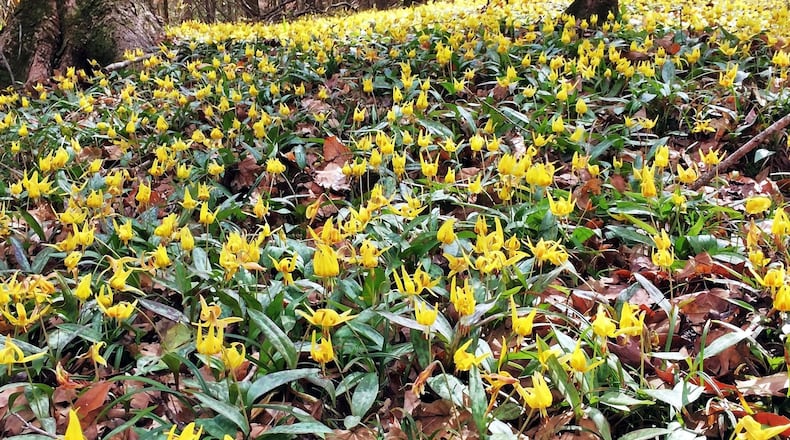The late Charles Wharton, who died in 2003 at age 80, was one of Georgia’s most eminent biologists. He tirelessly explored the state and probably knew more about its natural areas than any other person.
Even so, he once said that even after 30 years of field experience in Georgia he still came upon natural environments in the state that left him “profoundly incredulous.”
That was how I felt last weekend when several of us Georgia Botanical Society members visited the Wolf Creek Trout Lily Preserve near Cairo in Grady County along the Florida line. The preserve is home to what is by far the largest, densest expanse of trout lilies in the world — tens of millions of them.
When their nodding, freckled, bright yellow flowers come into peak bloom from mid to late February, it is one of Georgia’s most amazing natural spectacles. It’s what we went to see last weekend.
I was left breathless by the sight of the millions of blooming trout lilies blanketing 15 acres of forested, north-facing slopes, like a huge, yellow carpet stretching as far as the eye can see through the open woods.
A great irony is that trout lilies are there at all. The flowers, so named because their leaves look like a trout’s skin, are generally uncommon in southwest Georgia. They mostly prefer North Georgia‘s mountains and Piedmont. A theory is that they migrated southward from the mountains tens of thousands of years ago during the Ice Age. When the Ice Age ended, the lilies were left in spots in southwest Georgia and north Florida.
Trout lilies belong to a wildflower group known as spring ephemerals, which bloom before trees leaf out and shade the forest floor. So, by May, the lilies will be gone, with hardly a sign that they were there at all.
The 140-acre Wolf Creek Trout Lily Preserve, owned by Grady County and managed by volunteers, once was slated for a housing development but was saved in 2009 through the work and contributions of many individuals and organizations.
IN THE SKY: From David Dundee, Tellus Science Museum astronomer: The moon will be full on Thursday — the “Windy Moon,” as the Cherokee people called it. Saturn is low in the east a few hours before sunrise. Jupiter and Mars rise in the east just after midnight.
About the Author




